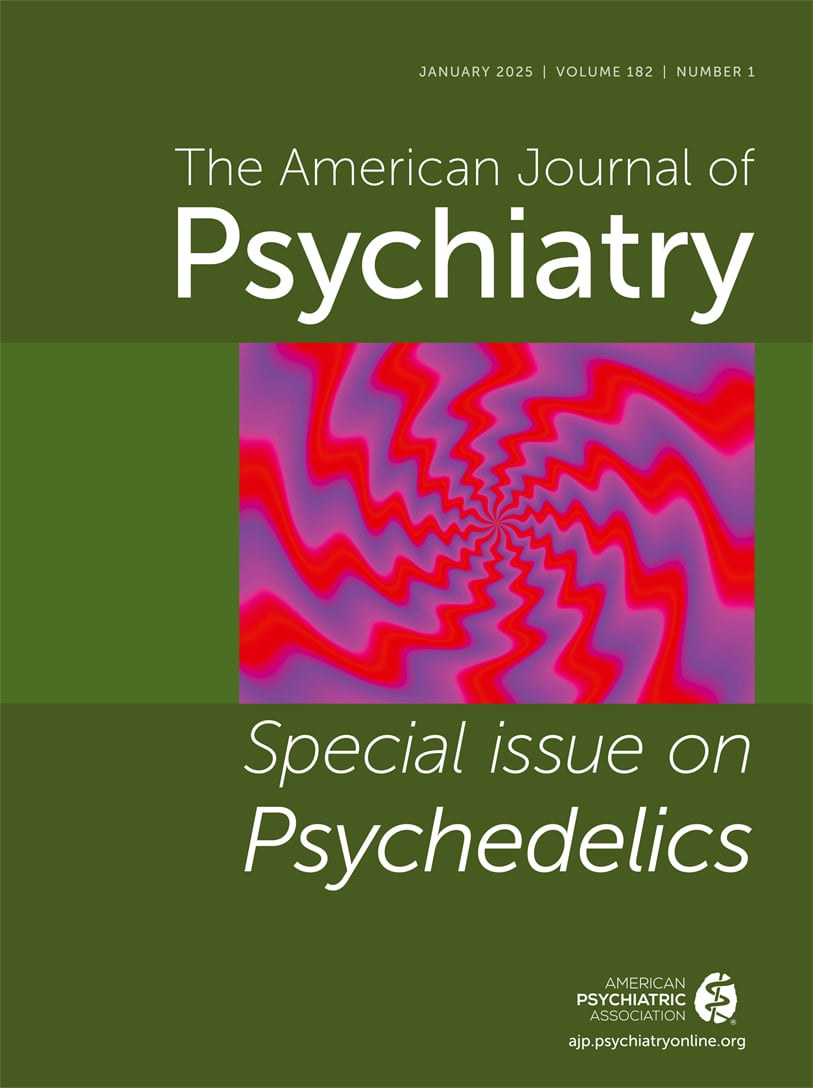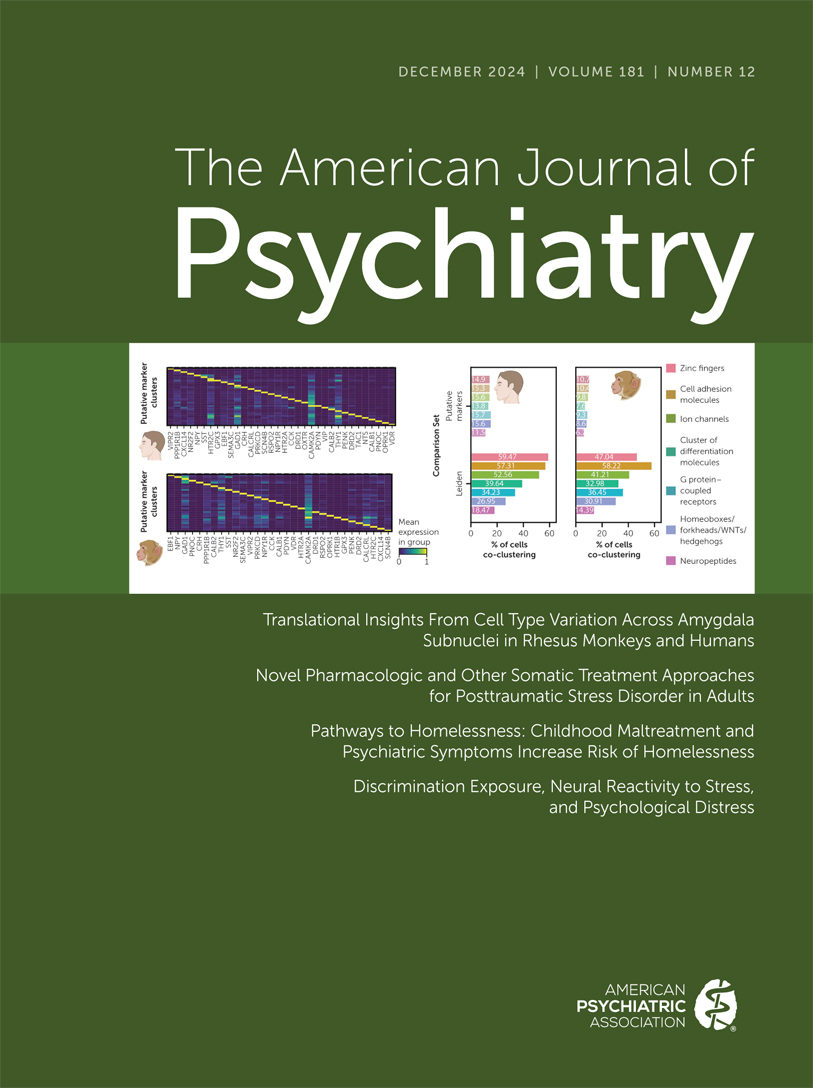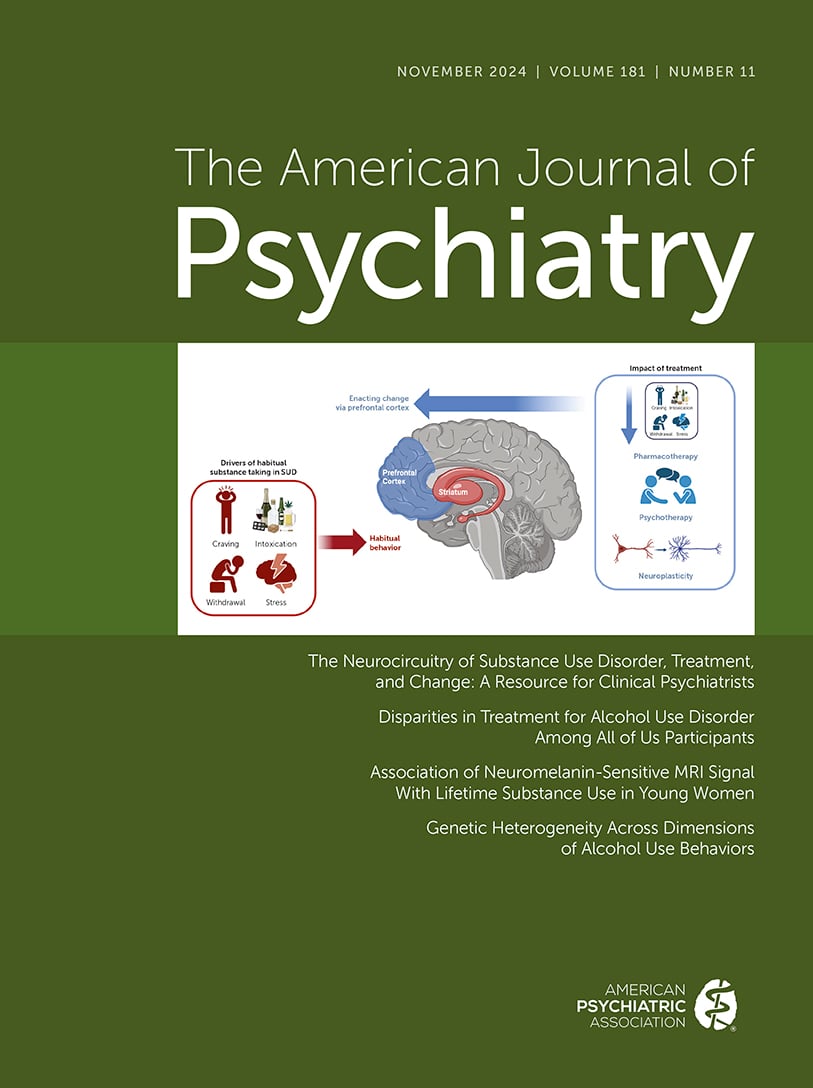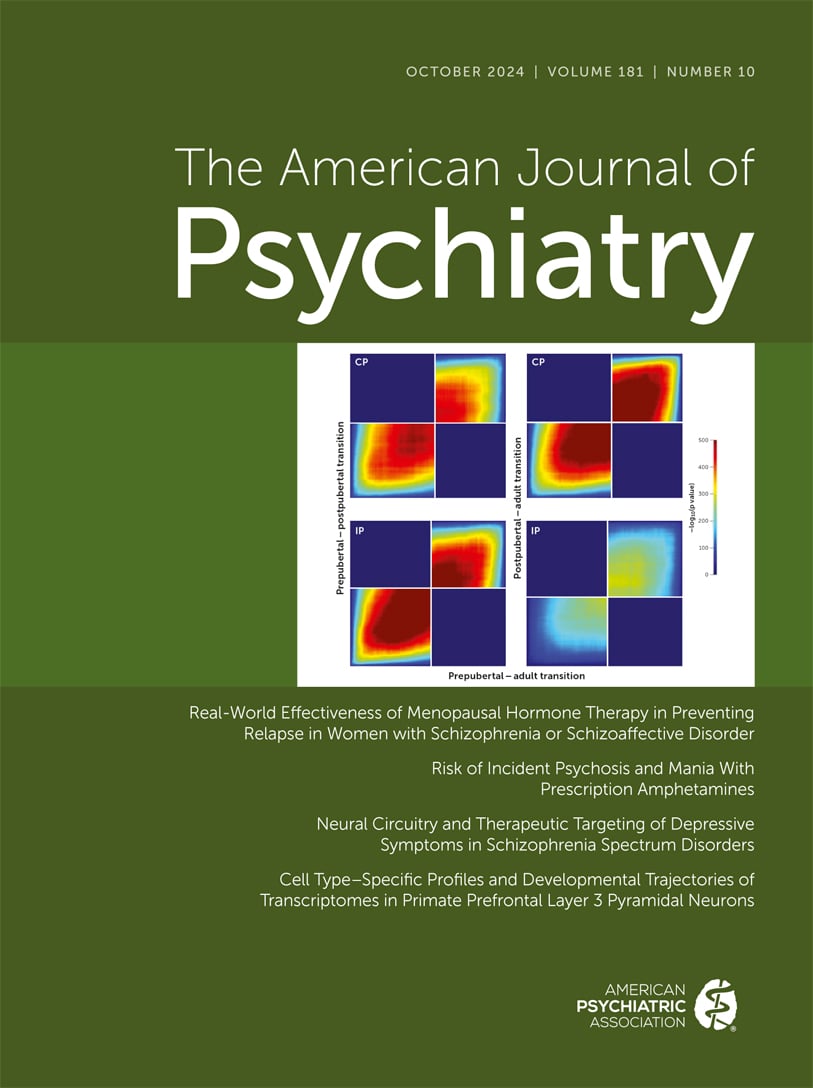American Journal of Psychiatry
- Volume 96
- Number 2
- September 1939
Article
Publication date: 01 September 1939
Pages283–295Routine reports of all accidental injuries to patients of Danvers State Hospital were collected for a two-year period, including even those accidents which were so trifling as to result in no visible injury. These reports were analysed statistically with ...
https://doi.org/10.1176/ajp.96.2.283Publication date: 01 September 1939
Pages297–3161. One thousand seven hundred and fifty-seven patients suffering from dementia præcox have been treated thus far with insulin hypoglycemia in the New York State Department of Mental Hygiene, and 1140 patients have been treated with metrazol. 2. The ...
https://doi.org/10.1176/ajp.96.2.297Publication date: 01 September 1939
Pages317–3261. In every hospital using insulin-shock the patients treated should be followed for five years. Another group of patients, or other groups, as near alike as possible should be followed for the same time as controls. It seems certain that relapses after ...
https://doi.org/10.1176/ajp.96.2.317Publication date: 01 September 1939
Pages327–3331. A total of 55 cases of dementia præcox were tested by the intravenous injection of prenarcotic doses of sodium amytal prior to treatment with insulin hypoglycemic therapy. 2. An ameliorating response to the injection of sodium amytal was obtained in 30 ...
https://doi.org/10.1176/ajp.96.2.327Publication date: 01 September 1939
Pages335–3451. Irreversible or hyperglycemic insulin presents a typical picture consisting of a sustained high blood sugar (following intravenous glucose administration), fever, rapid pulse and respiration and frequently fits, vomiting or diarrhea. It is a serious ...
https://doi.org/10.1176/ajp.96.2.335Publication date: 01 September 1939
Pages347–3601. Seven of 20, or 35 per cent, of a group of chronic schizophrenic patients were benefited by insulin to the point of social recovery or marked improvement, as compared with a 20 per cent spontaneous remission rate in a control group of 30 patients. 2. ...
https://doi.org/10.1176/ajp.96.2.347Publication date: 01 September 1939
Pages361–369The subject of sensitivity to insulin in the course of shock therapy was discussed in relation to this new treatment for mental diseases. A case of unusually high sensitivity was described, and the effective use of Braunmü hl's Zickzackmethode for ...
https://doi.org/10.1176/ajp.96.2.361Publication date: 01 September 1939
Pages371–3851. Simultaneous observations of clinical symptoms, cerebral oxygen utilization, blood sugar level and electrical activity of the brain were made on patients with schizophrenia receiving the insulin treatment. 2. Blood sugar decreases during the first ...
https://doi.org/10.1176/ajp.96.2.371Publication date: 01 September 1939
Pages387–3911. A positive Babinski was found in 92.3 per cent of cases after the onset of unconsciousness and in 74.2 per cent prior to the onset of unconsciousness in patients undergoing insulin treatment for schizophrenia. 2. The positive Babinski has no ...
https://doi.org/10.1176/ajp.96.2.387Publication date: 01 September 1939
Pages423–430The problem of hallucinations looms as an important one for the understanding of the nature of psychopathological conditions. From the viewpoint of actual experience, hallucinations form the epicenter from which the psychosis spreads. The clarification of ...
https://doi.org/10.1176/ajp.96.2.423Past Issues
View Issues Archive
Vol. 182 | No. 1

Vol. 181 | No. 12

Vol. 181 | No. 11
